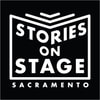|
Sue Staats: I have never read anything quite like our October writer’s latest barrio noir novel, Coyote Songs. It was (and these reactions are not necessarily in order) mesmerizing, gory, horrifying, shocking, perplexing, disturbing, gruesome, spellbinding, thrilling, mystical, impossible, heartstopping, ecstatic. The experience of reading it was terrifying and wonderful, like watching a horror movie where something bad has just happened and you know something even worse will happen, and soon, so you’ve got your hands in front of your face but you cannot stop peeking between your fingers. You just can’t stop watching. I couldn’t stop reading. This is brilliant work, deserving of the praise it’s been given and the awards it’s been nominated for, but so different a reading experience for me that I didn’t feel I could do an author interview justice. So I’m re-posting an interview with Gabino Iglesias by Tobias Carrol, which was published in Vol. 1 Brooklyn in February of 2019. In it, Iglesias specifically addresses the character of Mother, whose first chapter will be read during our virtual Stories on Stage Sacramento event on Friday, October 23 at 5PM. Links to more interviews are below the posted interview. Enjoy! "LIKE A SHANKING”: GABINO IGLESIAS ON WRITING COYOTE SONGS
FEBRUARY 7, 2019 by TOBIAS CARROLL Coyote Songs, the latest novel from Gabino Iglesias, covers a bold stylistic range, from tautly realistic characters living desperate lives to head-spinning forays into body horror. To call it “unsettling” would miss the mark somewhat: this is fiction that isn’t intended to leave a reader settled. It’s also a significant stylistic departure from his previous novel, the searing noir that was Zero Saints. I spoke with Iglesias about the process of finding a structure for this book, the role of religion in his work, and how bodies factor into his fiction. In the acknowledgements for Coyote Songs, you cite Brian Allen Carr for “showing me that a mosaic novel and pulp could coexist.” What was the moment that you recognized that? Brian wrote a novella titled The Last Horror Novel in the History of the World. Just like everything else he has written, it’s superb. It’s creepy and weird and beautiful. I knew I couldn’t repeat that because I’m not as good as he is and because I can’t sound like anyone else. However, I understood a mosaic was the way to go. I could offer a multiplicity of points of view and explore very tenuous connections in a way that a regular novel wouldn’t let me. I had all these characters in my head and bringing them together effectively would entail a 600-page novel. I didn’t want that. Barrio noir, like most noir, works best when it’s quick and violent, like a shanking. I went with that and it seems to get the job done. Did you know from the outset that Coyote Songs would be structured as a mosaic novel? Yes. A regular structure wouldn’t work. It did in Zero Saints because Fernando was the narrator and at the center of everything. It will work in the next one (hopefully!) because there is a character at the center who is navigating a series of situations. In Coyote Songs, there were many characters sharing the spotlight and only a few of them share some geographical proximity. It was a unified narrative with clearly separated fragments, and the mosaic approach struck me as the most effective way to construct my narrative before I’d written the first word. Did you have all of the parallel plotlines in mind from the outset, or did some of them develop over the course of writing and revising the novel? I had most of them in mind. Alma was the only one that came to me while I was writing. I wanted the book to matter, and that kinda made me laugh. Trying to marry entertainment and a message. I love doing/trying that because I want to entertain but also have a lot I want to say. Hah! Isn’t that what most creators aspire to? Alma became a cathartic character that allowed me to talk about art as I thought through the process. How did the handling of bodies and possession evolve as you wrote this book? The “The Mother” scenes head into full-on body horror, but the opening chapter also involves something, whether literal or metaphorical, entering Pedrito’s face… I love horror. That’s why I write it. The genre offers a lot of approaches, a lot of angles and styles. I love the supernatural, and that’s why I decided to make the bruja so powerful, her words so magic. However, there is also something special about body horror. Something happens to the human brain when we start reading about blood and mutilation. That’s my Brian Evenson’s Last Days is a favorite of mine: it changes your brain. I show people videos of folks removing bot fly larvae from their bodies and they almost always have a physical reaction. I want my fiction to do that, to make you cringe. To achieve that, I rely on body horror. That said, I learned from Richard Laymon that horror is most effective when your reader cares for the character who’s going through the horror on the page, so I wanted this book to be even more emotional than its predecessor. The stewmaker dissolves bodies. He has a room full of corpses. The Mother loses her teeth as her body becomes a cocoon. Then there’s also an angry ghost and her words make people do things. I love exploring the supernatural and the physical in the same story. Emotional angles amplify physical horror and vice versa. I’ll continue to explore those spaces… You recently wrote a column for LitReactor about not ignoring religion in fiction, and you mention religion’s place in this novel. Was that something in place from the beginning? I consider religion an integral part of barrio noir. Most people believe in something. They have rituals. They turn to a force when in danger or in fear. In noir and horror, people are almost always thrown into awful situations. I can write about atheists going through that but having religion in the mix makes it more interesting. Also, there is a lot of syncretism in my work. It’s a way to mine my past while also exploring my Caribbean roots in a different context. It’s a lot of fun. Stylistically, Coyote Songs is very different from Zero Saints. Were you consciously seeking to write something very different, or did those contrasts emerge down the line? Oh, man, you have no idea. Zero Saints was the book that put me on the map. Some folks noticed and I got new readers. It was nominated for the Wonderland Book Award, optioned for film, and translated into Spanish and published in Spain by Dilatando Mentes Editorial. One of the first things I knew about Coyote Songs was this: it couldn’t be Zero Saints again. I knew it would be a barrio noir, knew it would be horror and crime and weirdness thrown together, but also understood that rehashing the same book would be letting readers, my publishers, and myself down. I wasn’t going to do that. The next one will be very different from Coyote Songs. Gotta keep moving, man! Do you have a sense of where you see your next novel going? It’s going underground. And it’s crossing into Mexico. There will be blood. And drugs. And monsters. And some mutilation! Party time. https://lareviewofbooks.org/article/every-ounce-of-my-soul-an-interview-with-gabino-iglesias/ http://www.nightmare-magazine.com/nonfiction/interview-gabino-iglesias/
1 Comment
|
|
Who We AreLiterature. Live!
Stories on Stage Sacramento is an award-winning, nonprofit literary performance series featuring stories by local, national and international authors performed aloud by professional actors. Designated as Best of the City 2019 by Sactown Magazine and Best Virtual Music or Entertainment Experience of 2021 by Sacramento Magazine. |
|


 RSS Feed
RSS Feed
